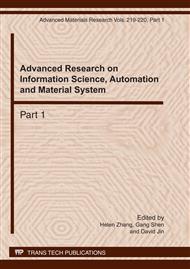p.135
p.140
p.144
p.151
p.156
p.160
p.165
p.170
p.174
An IDS Alert Aggregation Method Based on Clustering
Abstract:
How to aggregate and reduce duplicated alerts is one of the most important tasks in IDSs. This paper proposed an alert aggregation method, which clustering similar alerts into a hyper alert based on category and feature similarity. For each feature we define an appropriate similarity function. The overall similarity is weighted by a specifiable expectation of similarity. Experiments on DARPA2000 data set have demonstrated the effectiveness of this method.
Info:
Periodical:
Pages:
156-159
Citation:
Online since:
March 2011
Authors:
Keywords:
Price:
Сopyright:
© 2011 Trans Tech Publications Ltd. All Rights Reserved
Share:
Citation:


